Green Building Practices: Enhancing Energy Efficiency in Commercial Real Estate
September 12, 2023

In the modern era, where environmental concerns are at the forefront of global discussions, the commercial real estate sector is facing increasing pressure to embrace sustainable practices. Energy efficiency has emerged as a cornerstone of this movement, driven by the need to reduce carbon footprints, minimize resource consumption, and lower operational costs. Green building practices, which emphasize the integration of environmentally friendly technologies and design principles, play a pivotal role in enhancing energy efficiency within the commercial real estate landscape.
Understanding Energy Efficiency in Commercial Real Estate
Energy efficiency within commercial real estate refers to the conscious and strategic reduction of energy consumption while maintaining optimal functionality and comfort. This concept goes beyond the mere reduction of energy bills; it encapsulates a broader perspective of responsible resource utilization. Numerous factors influence energy consumption in commercial buildings, ranging from the architectural design and layout to the operational systems and tenant behaviors. Inefficient energy use not only leads to financial burdens but also contributes to environmental degradation, which in turn impacts the overall sustainability of communities.
Benefits of Green Building Practices in Commercial Real Estate
Cost Savings: The financial benefits of energy-efficient buildings cannot be overstated. While initial investments might be higher due to the integration of advanced technologies and materials, the long-term cost savings are substantial. Reduced energy consumption translates into lower utility bills and maintenance costs, resulting in a notable return on investment over the lifespan of the building.
Improved Indoor Conditions: Green building practices prioritize indoor air quality and occupant comfort. Efficient ventilation systems, non-toxic materials, and thoughtful design lead to healthier indoor environments. Improved air quality along with thermal comfort, and natural lighting contribute to increased employee productivity, reduced absenteeism, and enhanced tenant satisfaction.
Marketability and Tenant Attraction: The market has shown a growing preference for sustainable buildings. Green certifications, such as LEED (Leadership in Energy and Environmental Design), act as indicators of a building's commitment to environmental responsibility. Energy-efficient buildings are not only more attractive to potential tenants but also tend to command higher rental rates and occupancy levels.
Corporate Social Responsibility (CSR): Businesses are increasingly aware of their social and environmental impact. Adopting green building practices aligns with corporate social responsibility goals, demonstrating a commitment to sustainability and the well-being of the community. This resonates with stakeholders, including customers, investors, and employees.
Key Green Building Practices for Energy Efficiency
Designing and Constructing Energy-Efficient Buildings: The foundation of energy-efficient commercial buildings lies in their design and construction. The use of sustainable materials, innovative construction techniques, and passive design strategies like optimal building orientation, strategic placement of windows, and effective insulation contribute to reducing energy demand.
Lighting and Electrical Systems: Lighting accounts for a significant portion of energy consumption in commercial buildings. Green building practices involve the use of energy-efficient lighting fixtures and bulbs, integration of natural lighting through techniques like daylight harvesting, and the implementation of smart lighting controls that adjust based on occupancy and natural light availability.
Renewable Energy Integration: To further enhance energy efficiency, renewable energy sources can be integrated. Solar panels and wind turbines can be installed on-site to generate clean energy, reducing dependence on fossil fuels. Additionally, exploring offsite renewable energy procurement options can diversify the energy supply and contribute to sustainability goals.
Overcoming Challenges and Barriers
Initial Costs and ROI: One of the main challenges in adopting green building practices is the perceived higher upfront costs. However, it's crucial to consider the long-term financial benefits and return on investment that energy-efficient practices offer, including reduced operational expenses and increased property value.
Knowledge and Expertise: Implementing green building practices requires specialized knowledge and expertise. Industry professionals need access to training, resources, and collaboration opportunities to effectively integrate energy-efficient strategies into their projects.
Regulatory and Policy Frameworks: Supportive policies and regulations play a crucial role in driving the adoption of green building practices. Governments and municipalities can incentivize energy-efficient design, construction, and operation through tax incentives, grants, and building codes.
Collaboration and Partnerships: The complexity of green building practices necessitates collaboration among various stakeholders, including architects, engineers, contractors, developers, and policymakers. Effective partnerships can lead to holistic and successful energy-efficient projects.
Case Studies of Successful Green Buildings in Commercial Real Estate
One exemplary model of energy-efficient commercial real estate is "The Edge" located in Amsterdam, Netherlands. This iconic building is equipped with innovative features such as smart LED lighting that adjusts based on occupancy and daylight availability, an intelligent climate control system, and solar panels covering the south-facing facade and roof. These features have earned The Edge the title of one of the greenest and most sustainable office buildings globally, showcasing the transformative potential of green building practices.

Reference: https://plparchitecture.com/the-edge/
Conclusion
In the ever-evolving landscape of commercial real estate, embracing green building practices is no longer an option but a necessity. The importance of energy efficiency extends beyond cost savings; it encompasses environmental stewardship, enhanced occupant well-being, and a commitment to a sustainable future. As industry professionals, we have the responsibility to lead this transformation.
HOW vadiMAP CAN HELP
By integrating energy-efficient strategies, fostering knowledge-sharing, advocating for supportive policies, and fostering collaboration, we can drive the commercial real estate sector toward a more sustainable and energy-efficient horizon. The journey towards a greener future begins with each decision made today.
References:
- Commercial Real Estate: An Overview of Energy Use and Energy Efficiency Opportunities
- 5 ways clean tech is making commercial real estate more energy efficient
- Green building benefits
- Benefits of green building
- Energy Efficiency in Green Buildings Goes Well Beyond Construction
- Green Building Practices
- What are the challenges hindering adoption of green building practices?
- The first of a new generation of sustainable and smart buildings

